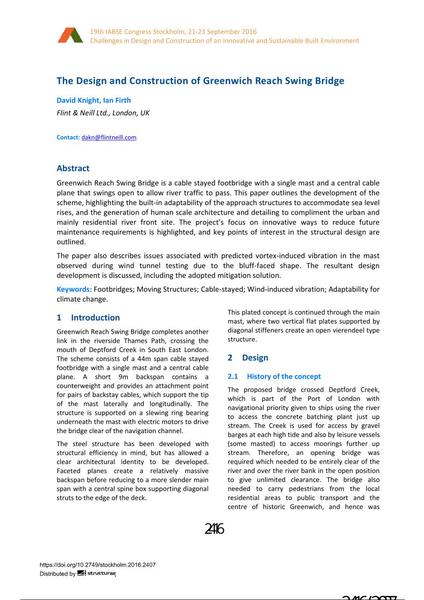The Design and Construction of Greenwich Reach Swing Bridge

|
|
|||||||||||
Détails bibliographiques
| Auteur(s): |
David Furnival Knight
(Flint & Neill Ltd., London, UK)
Ian Firth (Flint & Neill Ltd., London, UK) |
||||
|---|---|---|---|---|---|
| Médium: | papier de conférence | ||||
| Langue(s): | anglais | ||||
| Conférence: | IABSE Congress: Challenges in Design and Construction of an Innovative and Sustainable Built Environment, Stockholm, Sweden, 21-23 September 2016 | ||||
| Publié dans: | IABSE Congress Stockholm, 2016 | ||||
|
|||||
| Page(s): | 2416-2423 | ||||
| Nombre total de pages (du PDF): | 8 | ||||
| Année: | 2016 | ||||
| DOI: | 10.2749/stockholm.2016.2407 | ||||
| Abstrait: |
Greenwich Reach Swing Bridge is a cable stayed footbridge with a single mast and a central cable plane that swings open to allow river traffic to pass. This paper outlines the development of the scheme, highlighting the built-in adaptability of the approach structures to accommodate sea level rises, and the generation of human scale architecture and detailing to compliment the urban and mainly residential river front site. The project’s focus on innovative ways to reduce future maintenance requirements is highlighted, and key points of interest in the structural design are outlined. The paper also describes issues associated with predicted vortex-induced vibration in the mast observed during wind tunnel testing due to the bluff-faced shape. The resultant design development is discussed, including the adopted mitigation solution. |
||||
| Mots-clé: |
passerelles
|
||||

